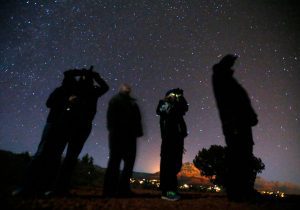Houses made of cardboard protect prey from wild cats and the like.

Flat houses, which soon provide people with a roof over their heads again after natural disasters, are already in use. In Australia, researchers are now testing similar concepts for native wildlife – so-called “habitat pods”.
Because animals suffer especially from bushfires. Wildlife has been particularly affected by the fires that destroyed more than 17 million hectares of land in 2019/20: an estimated three billion animals lost their lives. Not only the fire itself can be fatal to them. Even indirect effects, such as lack of food and shelter, kill many organisms afterward.
Climate change is exacerbating wildfires
There is always a fire somewhere in Australia. Because: “Fire is part of the Australian landscape, it is part of the life cycle,” explains ecologist Cathy Butler. Australian eucalyptus and grass trees need the heat of a fire in order to regenerate and reproduce. But the huge fires that broke out months ago in 2019/20 were not “normal,” according to the expert, who worked extensively to renovate the bush after the fires.
In many cases, climate change has been seen as playing its part: rising temperatures and drier vegetation, combined with hot, dry winds, for example, have fueled fires in Australia. Some of the fires were so intense that they created their own weather – storms that caused more fires with lightning. Indirectly, climate change has become a cause of fires with people, faulty power lines and dry thunderstorms.
Biodegradable pyramids
“The black summer fires were an alarm bell,” said ecologist Alexandra Carthy of Macquarie University in Sydney. “They got me thinking about what we can do to help wildlife.” In the end, their idea was to build small, flat houses that would provide shelter for wildlife after a fire broke out. Working with designers from the university, the ecologist began experimenting with different techniques and materials. In the end, she said, the folded design turned out to be the best in testing.
Shaped like a sturdy six-sided pyramid, habitat brooders are constructed from folded cardboard punched with several small holes for animals to get in and out of. Unlike wire and fabric assemblies previously used for post-fire shelters, the capsules are easy to transport and install, and are fully biodegradable.
Rescuer after a disaster
Flat packs were first used in a project by ecologist Angela Rania. For her PhD 2020, Rania will study the role of small local mammals as pollinators of plants in Sydney’s North Head Reserve. There, the Australian Environmental Organization for Wildlife Conservation launched an ambitious mammal reproduction programme. Three species of small mammals that became locally extinct have been reintroduced there since 2017.
But when a fire that was actually controlled by the fire brigade, which was supposed to reduce the likelihood of worse wildfires, got out of control and not only destroyed Rania’s experiments but also endangered the animals, she had to quickly rethink. “I have studied and observed the flora and fauna there for two years,” the ecologist said. “But after the fire we found charred skeletons in the ashes.” That was ‘heartbreaking’. “Once the dense bushes were almost completely removed, any surviving animals were easily preyed upon by birds, foxes, and cats.” Wild cats in particular are known to take advantage of easier hunting conditions after a fire.
Therefore, to save the surviving animals, Rania installed the antlers of a catastrophic habitat in the affected area. In this way, the animals must find shelter quickly – much like the flat houses that provide for people who have lost their homes after a natural disaster. A total of 200 cardboard shelters have been constructed on the campus in Sydney. In the months following the fire, the simple yet effective concept has proven to be a lifesaver for many animals.

Communicator. Reader. Hipster-friendly introvert. General zombie specialist. Tv trailblazer





